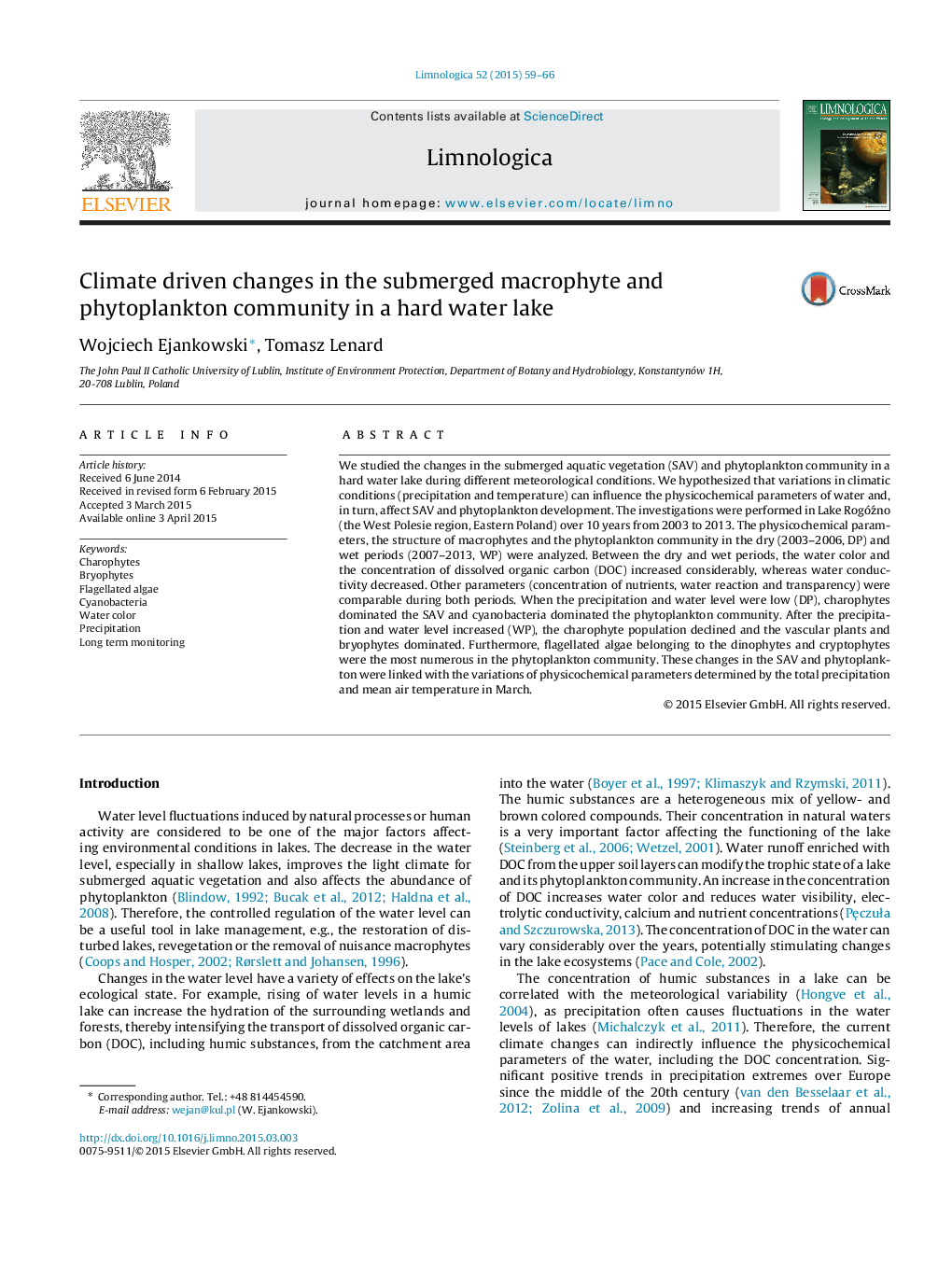| Article ID | Journal | Published Year | Pages | File Type |
|---|---|---|---|---|
| 6305539 | Limnologica - Ecology and Management of Inland Waters | 2015 | 8 Pages |
Abstract
We studied the changes in the submerged aquatic vegetation (SAV) and phytoplankton community in a hard water lake during different meteorological conditions. We hypothesized that variations in climatic conditions (precipitation and temperature) can influence the physicochemical parameters of water and, in turn, affect SAV and phytoplankton development. The investigations were performed in Lake Rogóźno (the West Polesie region, Eastern Poland) over 10 years from 2003 to 2013. The physicochemical parameters, the structure of macrophytes and the phytoplankton community in the dry (2003-2006, DP) and wet periods (2007-2013, WP) were analyzed. Between the dry and wet periods, the water color and the concentration of dissolved organic carbon (DOC) increased considerably, whereas water conductivity decreased. Other parameters (concentration of nutrients, water reaction and transparency) were comparable during both periods. When the precipitation and water level were low (DP), charophytes dominated the SAV and cyanobacteria dominated the phytoplankton community. After the precipitation and water level increased (WP), the charophyte population declined and the vascular plants and bryophytes dominated. Furthermore, flagellated algae belonging to the dinophytes and cryptophytes were the most numerous in the phytoplankton community. These changes in the SAV and phytoplankton were linked with the variations of physicochemical parameters determined by the total precipitation and mean air temperature in March.
Related Topics
Life Sciences
Agricultural and Biological Sciences
Aquatic Science
Authors
Wojciech Ejankowski, Tomasz Lenard,
